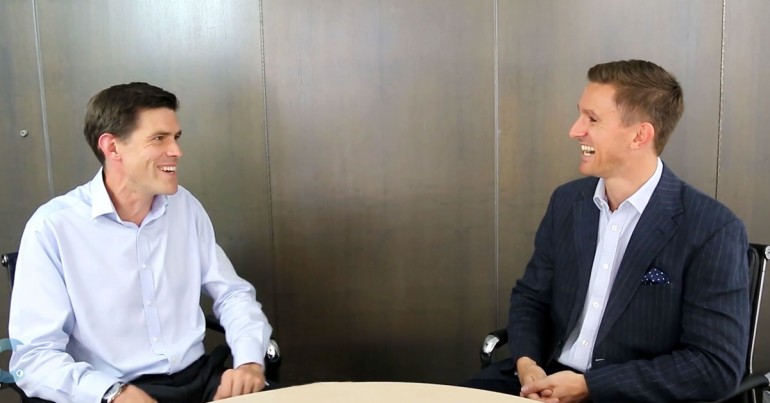
At MyCurrencyTransfer.com HQ, we love sitting down with innovative and fast growing money transfer companies. Today, it was the turn of Ben from CurrencyFair.com – one of Europe’s leading Peer To Peer Foreign Exchange companies. You’ll hear more about CurrencyFair, how the business started, growth plans and more.
- 0:19 – How did the idea of building CurrencyFair come about
- 1:17 – Could you explain the magic of CurrencyFair
- 2:38 – Who is the ideal fit for CurrencyFair
- 3:32 – How important is the messaging
- 5:37 – How are CurrencyFair different to Transferwise
- 6:38 – How do beat the mid-market price with CurrencyFair
- 8:38 – What safety of funds protocol are employed at CurrencyFair
- 9:43 – What’s in store next for CurrencyFair
- 10:33 – where do you see the industry in 10 years
Paul: Hi I’m here with Ben from the team at CurrencyFair, and just got a few Q&A a bit of Q&A session.
Ben: Thanks for having me along.
Paul: My pleasure nice to welcome you to the office.
So how did the idea of building CurrencyFair come about, and what problems did you solve initially?
Ben: Sure. It does sound a little bit like a joke. You have a couple of Australians and Irish men and British person walk in to a bar, and come up with a brilliant idea which was resolving around a frustration. A frustration was God the banks ripped us off when sending money abroad. We work with banks and we are not against them. It’s not us versus them or anything like that, but it is a case of they were losing money when they were sending money to another country. So they said if we need this problem resolved, maybe others do it too. Typically what happens is that banks who are the providers who charge 3, 4, 5% margin on top, when sending money to another country. And so the way it’s been structured on average its 0.35%
Paul: So it a huge savings.
Ben: Oh yeah big time.
Wow great and how does it work. Could you explain the magic of CurrencyFair?
Paul: I see.
Ben: So we manage to trickle those cost away and it’s fast. The weird thing that, when I say weird I just love it because yes cost and saving money is wonderful, but the control is something I really enjoyed the first time I used it as a customer. So it was a rare experience.
What customers do you typically go after, like who is the ideal fit for CurrencyFair?
Paul: They get it automated.
Ben: Exactly. They get an amazing rate, so they getting more money in their bank account. They can spend on fine wine somewhere, student subsidy. Then on the other side on the business side you’ve got the SME’s. Our biggest group is the personal customer.
But I remember the first ever transaction for CurrencyFair was $400,000 Euro from a business that needed to save a lot of money. So we have been expanding gradually into the SME, the business market as well.
That’s interesting. Professionally I believe you are in marketing. How important is the messaging around what you’re taking to the market, when you’re growing the product?
Paul: It’s just what you call it
Ben: Exactly, exactly. Some companies try to hide that with they show interbank, the rate that you see when you Google exchange rate that’s the interbank. There’s no mark up or anything. So for me and for CurrencyFair, it’s about educating people that in fact there is a cost. So when I talk about 3, 4, 5% exchange rate mark-up it means that that’s 3-5 pounds for every 100 that you send. Or $3-$5 for every 100 that you send. With us on average that’s $0.35 cents out of every 100, so every 100 that you send it does add up quite substantial. I mean in terms of education a quite generic sort of phrase or whatever, but I heard of a case recently where someone used us to buy a house back in their own country. By using us to do that they saved enough money to do a whole new kitchen. Another one of my favourites was a guy who used us to buy a Harley Davidson, because he’s always had a dream of riding around the edge of Scotland, the beautiful coast line.
Paul: Mid-life crisis.
Ben: Maybe who knows? But yeah with the savings from that he had the cost for the fuel, mechanic and all that kind of stuff covered just by using simple transaction. Yeah its good fun.
You mentioned earlier in terms of how the model works, it sounds similar to Transferwise. You mentioned a moment ago there is some companies show you the mid-market rate as a price. How are CurrencyFair different to Transfer Wise?
Paul: Amazing marketing.
Ben: Oh yeah. I love saving people money but you’re never going to catch me running around in my underpants. Let me just say that now on air if you like, but I think it’s a great company. I think any person who would need to be sending money; they should look at different options other than the banks, so ask Transfer Wise. I do think we are probably different in some ways; we are different geographies in some instances. They are probably better on the small amounts than CurrencyFair, but at the end of the day once you get a certain amount a couple grand upwards, I think we could be beaten on price and services and stuff like that. Of course I’m going to say that but generally I think we’re a very strong proposition.
That actually brings me on to my other question, which is I’ve heard that you can actually on occasions beat the mid-market price with CurrencyFair. That for me sounds too good to be true, but I’m sure there’s a science behind it. So how does that work?
If someone matches me it may happen instantaneously, it might take a day or two but if the rate moves and so on and someone matches you in the opposite direction, you can actually achieve that rate that doesn’t even exist which is better than the interbank. Yeah and about 14% of people did. The first time I ever did I went this is just crazy. So I talked about control before, but it’s a little bit of fun as well.
Paul: Yeah, yeah. Do you get a good take up of clients using that option, because it sounds pretty unique?
Ben: Yeah I’m pretty sure we’re the only company in the world that can offer that. Yeah like I said about 14% achieved it, and I think as the word gets out that will probably grow.
Paul: It sounds similar to a limit order or a price target.
Ben: Yeah.
Paul: Being reliant on the other side of the market effectively matching off your requirements is probably where the special source comes in.
Ben: Exactly.
Ben: The majority of people still just say I just want to do this right now, and they still get an amazing rate you can’t get anywhere else, but it’s pretty amazing to have this other options where you can do even better.
Obviously in this market dealing with people’s money, security of funds is a key driver of the comfort around of any transaction that an individual or business would do. How are you regulated, and what kind of safety of funds protocol are employed at CurrencyFair?
Paul: Good. Doing things right no matter where you are in the world.
Ben: Yeah it’s just play it safe and if we did something wrong then other business would fail, we need to make sure we do things properly so that people trust us because that’s probably the biggest element to all of this, is about trust.
What’s in store next for CurrencyFair?
So where do you see the industry in 10 years? CurencyFair is a mature company with good success behind you now. What one piece of advice would you give to new, ambitious Fintech entrepreneur whose perhaps starting their journey now?
Paul: Did you tweet it?
Ben: I wasn’t on Twitter then, but absolutely if I could take back time. But that’s what I think every Fintech business and every general technology start up, should be focusing on getting that moment delight, because that’s where those referrals.
Paul: That’s where referality comes from.
Ben: Exactly.
Paul: I’m so pleased. I do want to Tweet and tell everyone effectively, you’re mad not to use these guys because these guys are awesome.
Ben: Yeah, yeah exactly right. That’s what we are hoping forward to continue in our business, and we’ll support everyone else in that mission.
Ben: Thank you.
Paul: Lovely to meet you and thank you for your insights.
Ben: You too. Thank you.







